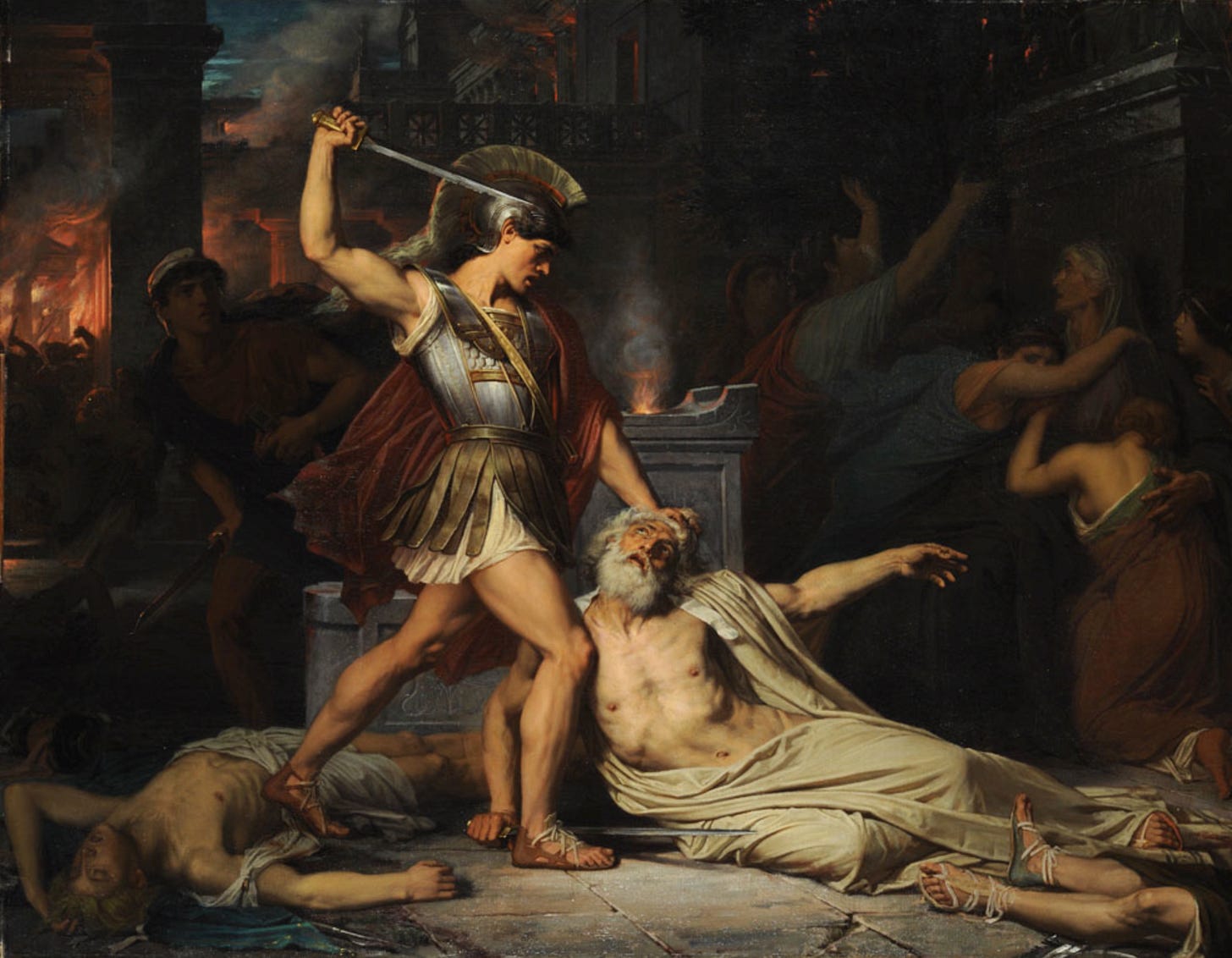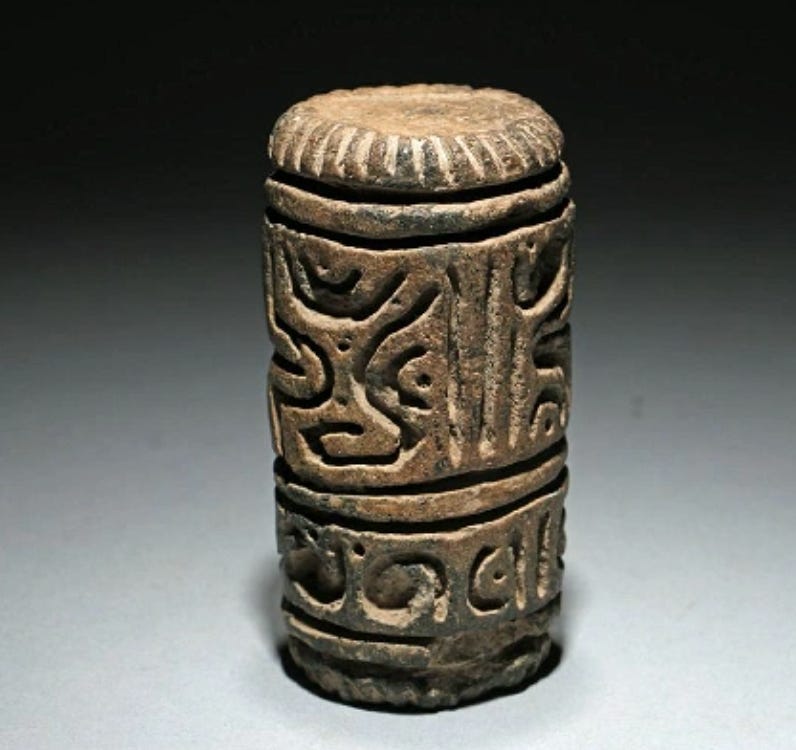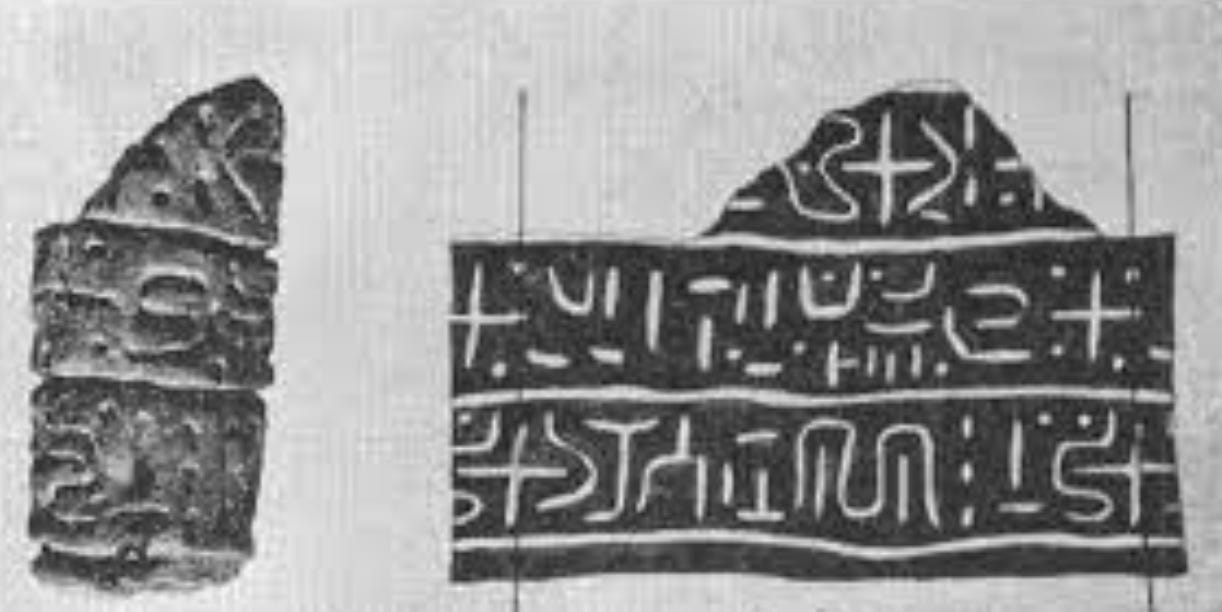Fresh Batch #51: Did Phoenicians Sail Around Africa in the 7th Century BC?
Are Pre-Columbian Cylindrical Seals Authentic?
Some suspect Virgil was part Etruscan because his name was Publius Vergilius Maro, and Maro is almost certainly an Etruscan name connected with the title maru according to M. L. Gordon (JRS, XXIV (1934), p. 188). I wonder if this author was aware of Maur/Mar being of Phoenician origin, meaning Great, Lord, or Prince. This would be yet another proof that the Etruscans were descended from Phoenicians (if not the very navigators referred to as Puni, the root of Phoenician), as well as an indicator that Meru might come from the Mediterranean (not Asia) on account of Etruscan not being Indo-European. Grant added (The Etruscans. p. 105), “Vergilius, too, is commoner in Etruria than elsewhere; and the name of Virgil’s mother, Magia, may be Etruscan as well. It is not surprising, therefore, that the Aeneid displays, in many passages, a profound and subtle preoccupation with the Etruscans and their destiny.”
Why does this matter? Because according to some, there were tablets in Etruscan referring to navigators as Puni, which if they were Etruscan, it means that the Etruscans are Phoenicians. I think one of the issues negatively impacting archaeology is the tendency to rely on pottery styles found in a region in order establish who lived there. An example would be using Greek pottery found in Italy to claim that area was Greek first, especially because by the time the Greeks came into power through maritime trade, the routes had already been established by Phoenicians for thousands of years, which means the diffusion of artifacts all over the world would have been prevalent. It’d be like someone excavating the United States of America a thousand years from now claiming the it was founded by the Chinese because so much of our goods are manufactured in China.
Pottery certainly proves diffusion but it does not establish anything beyond that on its own. Grant corroborates this, although I’m not sure if his opinion about it was as strong as mine (Ib. p. 108), “At Spina the abundance of Greek pottery, starting in the sixth century and reaching its climax in the second quarter of the fifth, might seem to suggest Greek predominance, as might Spina’s unusual distinction of possessing its own treasury at the quintessentially Greek sanctuary of Delphi; however, Caere, which had an unmistakably Etruscan government, also had a treasury at Delphi, and the balance of archaeological evidence suggests that Spina was primarily an Etruscan town with a subsidiary Greek element and quarter—at least, the Etruscans were apparently dominant for a brief period, at the very time when the influx of Greek material was at its height.”









Again on page 109, “Direct links between Spina and Etruria by land cannot altogether be ruled out: it is significant that the place contains more bronze-work from Vulci than is to be found in any other northern city. Spina also possessed good communications up the coast to the north and maintained ties with the eastern Alpine regions, to which its version of the Etruscan alphabet travelled. In particular, this line of communications gave it access to Baltic supplies of amber, which it subsequently passed on not only to Greece but also to Etruria, either through Bononia or directly.




“On the way to these Alpine regions lay the Venetians, who lived around the tope of the Adriatic. They may have been at Spina before the Greeks and the Etruscans, and no doubt some still remained, for later on there were still people there who had Venetian names, yet did not speak the Indo-European Venetian language but Etruscan.” (Brendel, p. 256; A. J. Pfiffig, Sprache, VIII (1962), pp. 149-153.)
There will be much more to say about this, however, I also wanted to bring a few other subjects to your attention. The first is that of cylindrical seals allegedly found in the Americas, which seem to be similar to those used in Mesopotamia.
There were many accounts of Americans not having use of letters. Is this true or did the Americans have letters and the Inquisition destroyed everything that could give insight into their history?
This is a problematic subject because the use of letters is a limited subject and a significant technology developed by navigators and merchants to communicate a lingua franca for trade while not giving away the origin of the letters, which would be the systems of priestcraft involving hieroglyphics and such that the secret of letters is based on. The first abecedarium is Phoenician, so for there to be letters found in other cultures, it follows logically that the Phoenicians brought this alphabet or that the artifacts are forgeries.
However, I have found two important accounts that will reconcile this, including one that claims that Phoenicians were hired to sail around Africa at the behest of a Pharaoh, a journey which took approximately two years on account of them having to stop and farm to grow enough provisions to continue the journey. The second account corroborates just about everything that I’ve suspected and demonstrated in The Holy Sailors (click the image) regarding the Phoenicians being Ancient Italians and their peopling of Europe and other places.
The rest of this article is a monster. You’ll get your money’s worth on this post alone. Become a member to access it.
Keep reading with a 7-day free trial
Subscribe to Ancient History, Mythology, & Epic Fantasy to keep reading this post and get 7 days of free access to the full post archives.









